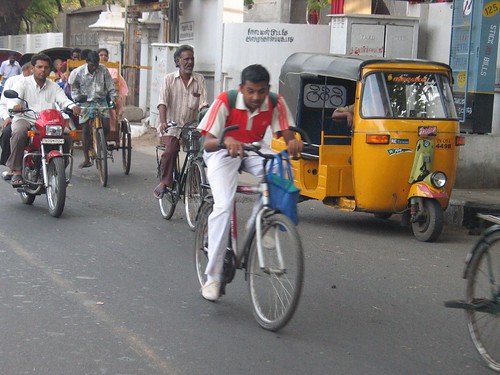Park, Charge, Go Green! Solar Carport Gives Plug-Ins a Charge
(Source: Wired)
One of the great criticisms of electric vehicles is the power they rely on often comes from fossil fuels, leading critics to question how “green” they are. A British firm has a solution for that — a carport topped with photovoltaic cells that can charge an EV.
Specialty glass and plastic manufacturer Romag says the PowerPark is just the thing for parking lots where electric vehicles may one day compete for spots to plug in. The first PowerPark was installed at the company’s headquarters, and Romag says additional installations are planned around the United Kingdom.
So far, the cost of installation and materials varies based on volume and location, but Webster said that the canopies could be purchased singly or in groups. Pricing “should be competitive with other forms of BIPV.” That’s Building Integrated Photovoltaics, for those of you who are really off the grid.
Each PowerPark canopy is rated at 1.5 kilowatt peak, a measure of a photovoltaic system’s peak output. Even in misty, foggy Northern England, the company estimates each parking space could generate about 1,100 kilowatt hours of electricity annually. The canopies are linked to the electric grid so energy “can be generated for use in the associated buildings when cars are not being charged,” Webster said. “No electricity is wasted.”
It’s got a distinctive shape that advertises itself and just might end up the most attractive piece of engineering in a Walmart parking lot. It could even help to drive sales, as customers might linger a little longer in the store waiting for their Tesla to charge.




 These were the two chief issues discussed during a public meeting at the Carter Road amphitheatre, Bandra (W), to popularise cycling in the city to check pollution and reduce traffic congestion. The meeting, which generated a buzz in the vicinity, had several passersby joining in. Also among the participants were young professionals working in the IT industry and call centres.
These were the two chief issues discussed during a public meeting at the Carter Road amphitheatre, Bandra (W), to popularise cycling in the city to check pollution and reduce traffic congestion. The meeting, which generated a buzz in the vicinity, had several passersby joining in. Also among the participants were young professionals working in the IT industry and call centres. 






 The
The